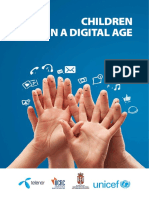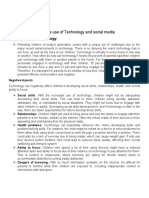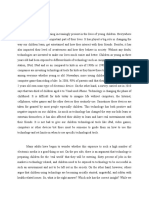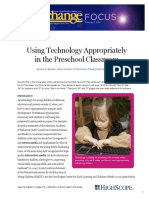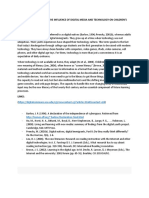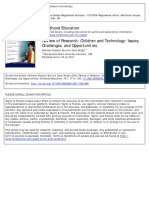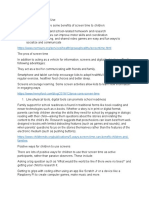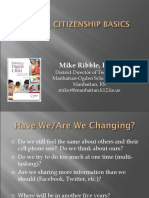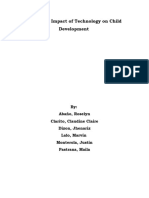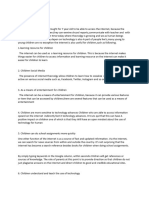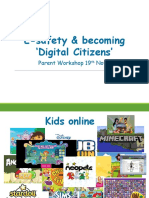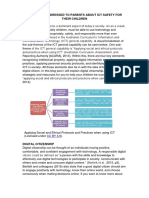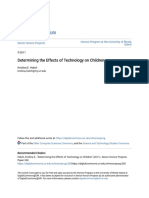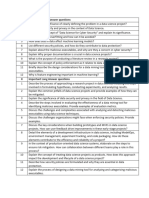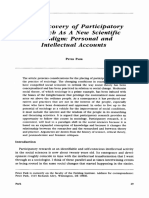0% found this document useful (0 votes)
75 views6 pagesGrowing Up Tech
Children can benefit from internet use in several ways when properly monitored and taught. They have access to limitless information online to support their education and interests. Educational apps allow children to learn in an engaging way. The internet also enables connectivity, such as maintaining relationships through social media and learning about current events. While there are risks like cyberbullying, children's access to opportunities online outweighs these risks when paired with education and parental oversight.
Uploaded by
api-459268610Copyright
© © All Rights Reserved
We take content rights seriously. If you suspect this is your content, claim it here.
Available Formats
Download as PDF, TXT or read online on Scribd
0% found this document useful (0 votes)
75 views6 pagesGrowing Up Tech
Children can benefit from internet use in several ways when properly monitored and taught. They have access to limitless information online to support their education and interests. Educational apps allow children to learn in an engaging way. The internet also enables connectivity, such as maintaining relationships through social media and learning about current events. While there are risks like cyberbullying, children's access to opportunities online outweighs these risks when paired with education and parental oversight.
Uploaded by
api-459268610Copyright
© © All Rights Reserved
We take content rights seriously. If you suspect this is your content, claim it here.
Available Formats
Download as PDF, TXT or read online on Scribd
/ 6




